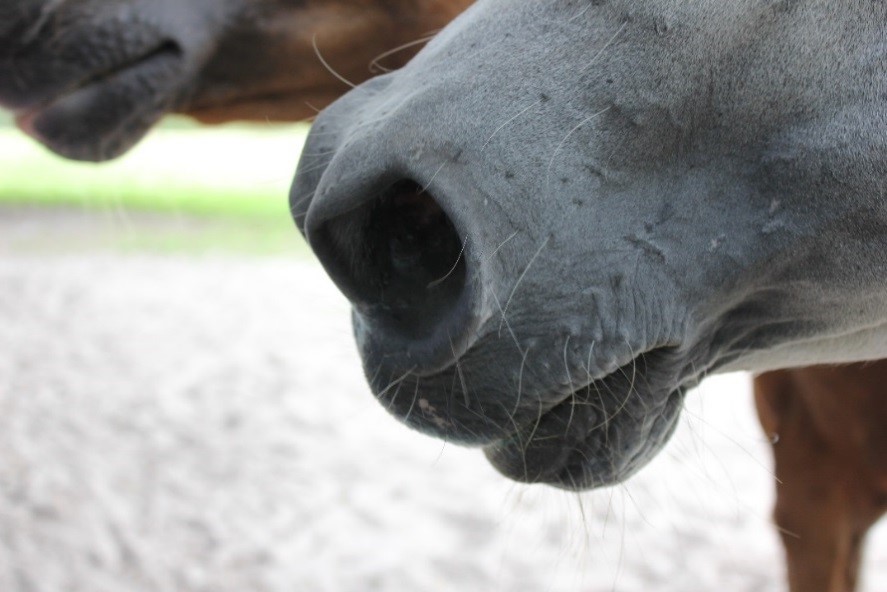Horses Should Sweat Like a Horse
Unlike cows, pigs and dogs which primarily use respiration to dissipate heat, the primary way horses, and of course humans, stay cool in hot weather is through evaporation of sweat. In environments with high humidity, sweat does not evaporate very well so horses may sweat more, and for a longer period of time than in dry conditions. If the horse is being worked, heat is produced as a by-product of muscle contraction, and must also be compensated for through both respiration and sweating. Stress and/or pain, will also trigger the sweating mechanism.
A horse that is unable to sweat is in grave danger because they cannot dissipate heat and are at serious risk for heat stroke. The inability to sweat or not sweating in appropriate situations is a condition called ANHIDROSIS. Florida’s hot, humid climate seems to be a perfect place for this poorly understood disorder to develop. Some believe that overstimulation of the sweating mechanism over time causes the system to shut down.
Factors that may contribute to a horse becoming anhidrotic:
- Heredity
- Environment
- Exercise stress
- Metabolic issues

How can you tell if your horse is anhidrotic?
Do they have a dry coat in warm weather and/or after exercise? Do they have abnormally labored breathing in warm weather and/or after exercise? Does your horse become exhausted more quickly than normal or resist work altogether? Over time, does your horse’s hair coat becomes dull and thin (especially on the face and chest)?
Diagnosis
If your horse is showing signs of being anhidrotic, you can pursue a more definitive diagnosis through a “sweat test” conducted by a veterinarian. They can inject a small amount of terbutaline under the skin. A normal horse will sweat in response, while anhidrotic horses will show little or no response.
Management
If you have a non-sweater, there is no cure. The horse must be managed in a way that prevents heat build-up and/or helps him dissipate heat in the absence of sweat.
-

Photo credit: Laura Patterson Move to a cooler climate for a period of time.
- Exercise the horse at cooler times of the day or only during cool seasons.
- Allow more frequent breaks in exercise and cool the horse out aggressively after work.
- Use misters and fans in the horse’s lounging area.
- Provide shade and access to a pond if possible.
- Turn out at night and leave up in a well ventilated barn in the hottest part of the day.
- Some horses respond to supplements like One AC (Miracle Powder Co.)
- Acupuncture treatments have helped some anhidrotic horses begin sweating for a time.
Do you have a horse that is Anhidrotic?
Searching for Answers: Dr. Samantha Brooks, and her Ph.D. student Dr. Laura Patterson-Rosa are conducting a study to identify the genetic components contributing to Equine Anhidrosis at the University of Florida. If you have a an anhidrotic horse, and would be willing to participate in their research project:
- Visit www.ufequinegenetics.org/anhidrosisv2.html for instructions or contact us at (352) 273-8080 or email equinegenetics@ifas.ufl.edu
Download the project flyer to share with other horse owners who might also be wiling to participate:
 0
0


